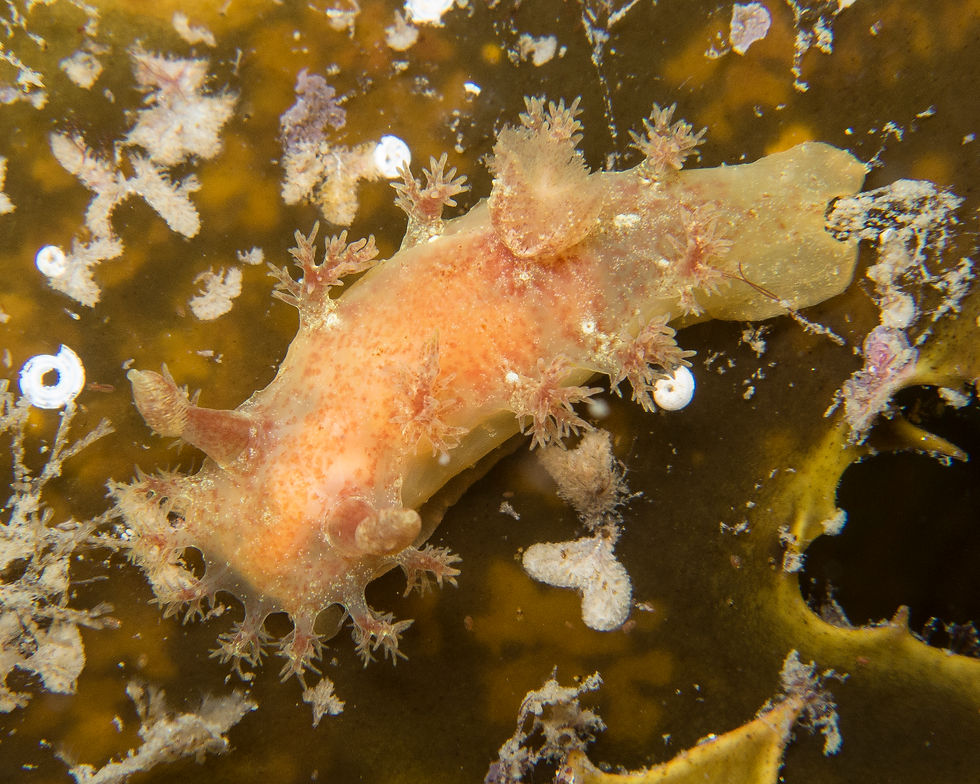Great Sea Slug Sunday
- stevesmith17
- Oct 15, 2021
- 4 min read
Updated: Dec 2, 2021

As part of the Great Southern Bioblitz, we invite you to join us for Sea Slug Sunday around the southern hemisphere on October 24th.
Sea slugs are one of the most popular groups of marine organisms with macro-photographers. Despite this attention, many species are undescribed and there are large gaps in information about their patterns of distribution.

Goniobranchus splendidus is a common and highly photogenic dorid nudibranch in subtropical eastern Australia.
With short life cycles, sea slugs can respond quickly to environmental changes. This combination of popularity and application for environmental monitoring was the impetus for developing the Sea Slug Census program, which has been running for nearly 8 years in eastern Australia. On Sea Slug Sunday, you can become part of the effort to expand our knowledge of this amazing group of molluscs.
Observe what you can and upload your pictures onto iNaturalist! You can, of course, photograph and upload images of sea slugs throughout the GSB – but we are giving them a special focus on Sunday 24th.
Who are the sea slugs?
We include all marine and estuarine gastropod molluscs with a soft body or a very reduced shell. This includes the nudibranchs, sea hares, side-gilled slugs, bubble shells, umbrella shells, sap-sucking slugs, head-shield slugs as well as some other soft-bodied groups (the Velutinidae - "lamellariids", and the Onchiidae or "onch slugs").
A gallery of sea slugs from eastern Australia giving an indication of the beauty and diversity of the groups included in the Sea Slug Census.
Finding and photographing sea slugs
Habitat
Sea slugs occur in most, if not all, marine and estuarine habitats. Diversity is highest in shallow underwater habitats, especially where conditions provide suitable food and habitat. Areas with good water movement, that support habitat-forming, suspension-feeding organisms such as sponges, hydroids, bryozoans, ascidians and algal forests (e.g. kelp) are some of the best places to search on underwater reefs. Tide-pools can also support a high diversity of sea slugs, especially those on sheltered shores. Tide-pools also have the added advantage of ease of access for those who are unable to snorkel or scuba dive.

Tide-pools support a high diversity of marine life and are a great habitat to target for sea slugs.

Even very shallow tide-pools (this one is less than 30cm deep) provide suitable habitat for some types of sea slug, such as sea hares ( a pair of Aplysia argus shown here).
Tips for finding sea slugs
1. Look for colour and movement.
2. Slow down and look closely at the habitats in your search area.
3. Find the food source and you increase your chances of finding sea slugs (sponges, hydroids, bryozoans [moss animals] and green sea weeds are great habitats to target).
4. Look for egg ribbons/masses which can help identify the location of camouflaged species.
5. The composition of sea slug assemblages changes from day to night. If you can do so safely, consider searching at night as well as during the day.
6. If searching in tide-pools, remember that these are generally only accessible at low tide. Check the tidal information for your local area.

This tiny (8mm), camouflaged nudibranch (Okenia pilosa - top right) was only found because the spiral egg cases, laid over its host bryozoan (the lattice-like background), were an indication of its presence. Nevertheless, it still took some time to find!
Photographing sea slugs
While good images of sea slugs can sometimes be captured without using a waterproof camera (e.g. focusing through the water surface in tide-pools), the best results are obtained using an underwater/waterproof camera. Thankfully, a wide selection of waterproof cameras (with or without a housing) is now available.
The size of sea slugs ranges from less than 1mm up to 300mm+. Typically, most species found in census events are between 5-150mm. With this size range, different photographic approaches are needed (e.g. super-macro for tiny animals), but the principles are the same:
· Try to get images of undisturbed sea slugs where you find them. Many have body parts that they retract when disturbed. The host on which you find them can also provide clues to their identity.
· Where possible, take images from above showing the entire animal. Additional images (which we recommend) can be taken from the side, and should also include close-ups of any key features (e.g. the front of the animal, gills, rhinophores [paired, sensory protrusions on the “head-end”]).
· Try to get as close to the subject as possible and use an external light source if you have one (LED torch, flash, video light). The extra light will mean that more of the subject will be in good focus (i.e. greater depth-of-field), which is especially important for small slugs.
Examples of images that show the key features to help confirm identification are shown below.

Chromodoris kuiteri - note the gills and rhinophores are visible and the whole body is included in the photo.

Kaloplocamus ramosus with all dorsal appendages clearly visible.

Phyllodesmium poindimiei crawling on a flat surface (kelp blade) allowing all of the key features to be included in the image.




























Got me keen Steve!